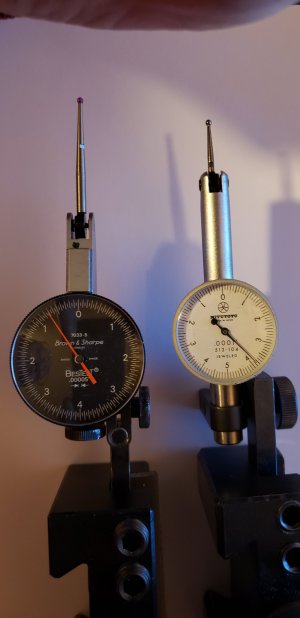I own a relatively inexpensive asian lathe that appears capable, based on results, of producing accurate barrels. No doubt my question, and, possibly my methodology, will underscore my lack of experience in machining and lathe work in particular.
I use the 4-jaw chuck and some aluminum shims to hold the barrel in the head stock. An outboard spider is used to support the muzzle end of the barrel. I have been using PTG range rods with appropriately sized bushings to center the bore prior to cutting and threading the tenon. Starting with a .001 gauge, I adjust both the 4-jaw and outboard spider to obtain the smallest practical runout of the range rod both close to the tenon and at the end of the range rod furthest away from the tenon. After there is less than .001 runout I switch to a .0001 dial indicator. It is a Mitutoyo 2803S-10. This is not a expensive indicator but it is a decent one--I believe. I continue adjusting the 4-jaw and spider until I get less than .0002 of runout close to the tenon and as far away as the rod allows. All of this adjusting is done with the lathe out of gear and spinning the 4-jaw by hand.
Here comes the question part: I expect that when I run the lathe under power that I will get the same runout measurements but, that is never the case. The runout is always much worse under power. Short of buying a better lathe, can anything be done about that and if anyone else is experiencing this, what workarounds are you using that you are willing to share?
I assume this is a result of inexpensive bearings and other mechanically sloppy tolerances. I have 'resolved' or worked around this issue but writing numbers on the tenon with a permanent marker and using my phone to video the lathe in operation in slow motion. I play back the video and make the necessary adjustments to get back to less than .0002 runout under power. I do always wonder, though, which measurement to believe: The ones where I turn the chuck by hand or the one under power. Given that I cut, thread and ream under power, I have chosen that that set of measurements to get 'right.'
Thank you for thoughts,
Henryrifle

